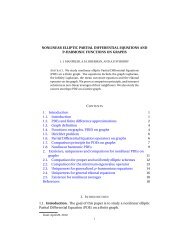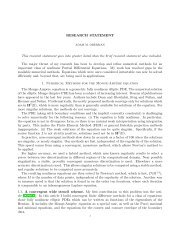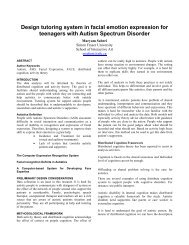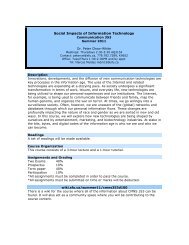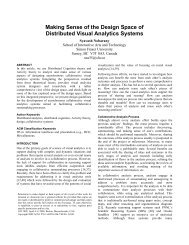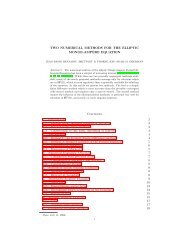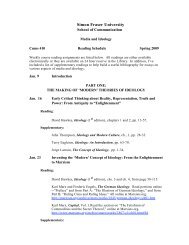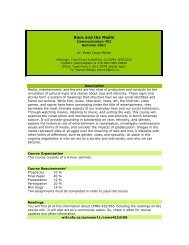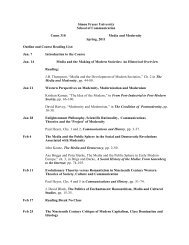Boyd Convex Optimization book - SFU Wiki
Boyd Convex Optimization book - SFU Wiki
Boyd Convex Optimization book - SFU Wiki
Create successful ePaper yourself
Turn your PDF publications into a flip-book with our unique Google optimized e-Paper software.
PSfrag replacements<br />
336 6 Approximation and fitting<br />
1.5<br />
ŷ(t), y(t)<br />
0.5<br />
−0.5<br />
−1.5<br />
0<br />
0.2<br />
0.4<br />
t<br />
0.6<br />
0.8<br />
1<br />
0.05<br />
y(t) − ŷ(t)<br />
0<br />
−0.05<br />
0<br />
0.2<br />
0.4<br />
Figure 6.22 Top. The original signal (solid line) and approximation ŷ obtained<br />
by basis pursuit (dashed line) are almost indistinguishable. Bottom.<br />
The approximation error y(t) − ŷ(t), with different vertical scale.<br />
t<br />
0.6<br />
0.8<br />
1<br />
where<br />
a(t) = 1 + 0.5 sin(11t),<br />
θ(t) = 30 sin(5t).<br />
(This signal is chosen only because it is simple to describe, and exhibits noticeable<br />
changes in its spectral content over time.) We can interpret a(t) as the signal<br />
amplitude, and θ(t) as its total phase. We can also interpret<br />
ω(t) =<br />
dθ<br />
∣ dt ∣ = 150| cos(5t)|<br />
as the instantaneous frequency of the signal at time t. The data are given as 501<br />
uniformly spaced samples over the interval [0, 1], i.e., we are given 501 pairs (t k , y k )<br />
with<br />
t k = 0.005k, y k = y(t k ), k = 0, . . . , 500.<br />
We first solve the l 1 -norm regularized least-squares problem (6.18), with γ =<br />
1. The resulting optimal coefficient vector is very sparse, with only 42 nonzero<br />
coefficients out of 30561. We then find the least-squares fit of the original signal<br />
using these 42 basis vectors. The result ŷ is compared with the original signal y<br />
in in figure 6.22. The top figure shows the approximated signal (in dashed line)<br />
and, almost indistinguishable, the original signal y(t) (in solid line). The bottom<br />
figure shows the error y(t) − ŷ(t). As is clear from the figure, we have obtained an



